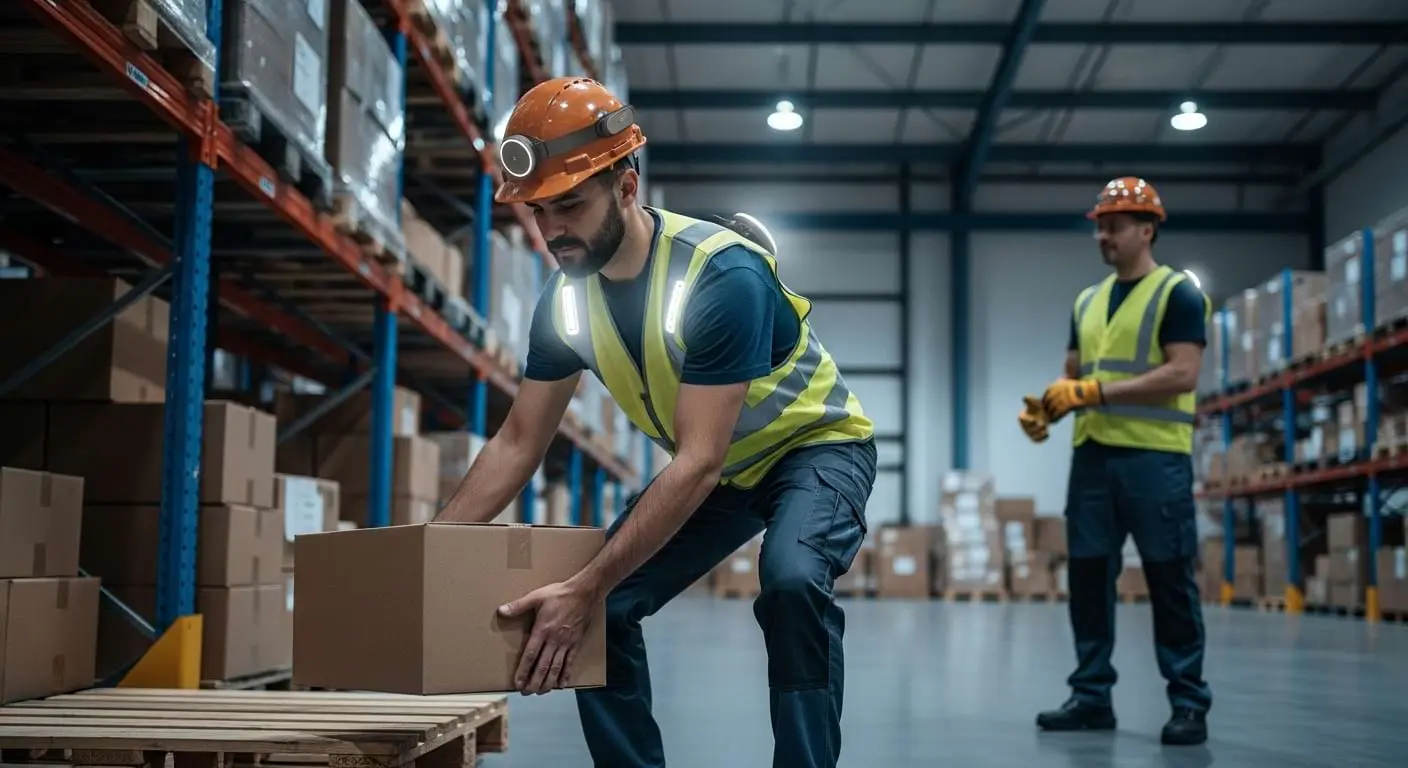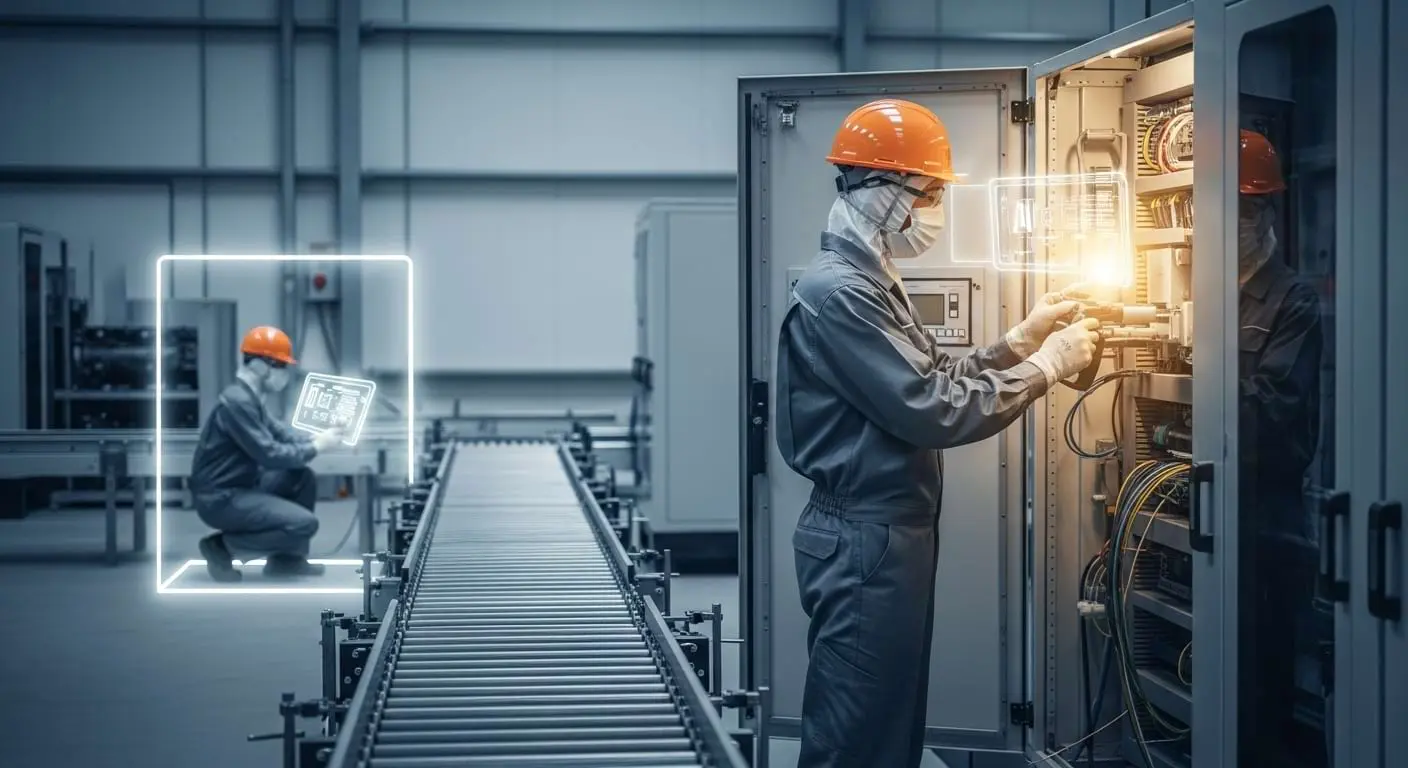AI in occupational health is transforming how organizations protect workers, prevent injuries, and ensure compliance. By harnessing AI, companies can drive greater efficiency, boost workplace safety, and make faster, data-informed decisions.
This practical guide explores how AI is reshaping occupational health, from real-time hazard detection and injury prediction to AI for compliance and safer equipment. Whether you’re in manufacturing, transportation, construction, healthcare, or logistics, AI offers actionable tools to improve outcomes, streamline compliance, and safeguard your workforce.
Key Takeaways:
- AI enables real-time hazard detection using computer vision and IoT sensors to monitor workplaces and prevent incidents instantly.
- It uses predictive analytics to analyze historical data, identifying patterns to forecast and prevent injuries before they are likely to occur.
- AI-powered wearables monitor employee fatigue, posture, and repetitive motions, providing real-time feedback to reduce strain and musculoskeletal disorders.
- AI delivers personalized safety training through simulations and microlearning modules tailored to individual worker roles, behaviors, and risks.
- The technology helps automate compliance monitoring but introduces critical ethical considerations, such as worker privacy and data security, that must be managed responsibly.
Table of Contents
Real-Time Hazard Detection?
AI occupational health and safety systems use advanced computer vision and sensor integration to continuously monitor workplace environments in real-time. By analyzing data from cameras, wearables, and IoT sensors, AI can detect and respond to risks far faster than traditional methods.
For example:
- Fall detection: AI-powered video analytics can instantly identify when a worker slips, trips, or falls, triggering immediate alerts to supervisors or emergency services.
- Hazardous zones: AI can track movement and alert workers if they enter restricted or dangerous areas, such as near heavy machinery or high-voltage equipment.
- Unsafe behavior: Algorithms can spot patterns like improper lifting techniques, failure to wear PPE, or distracted behavior (e.g., using phones while operating equipment).
These real-time insights allow companies to act quickly, prevent injuries, and build a proactive safety culture that evolves with each data point collected.
Predicting Injuries Before They Happen

In 2023, the United States recorded 2.6 million nonfatal workplace injuries and illnesses, with slips, trips, and falls accounting for the majority of accidents.
While this data is freely available from the U.S. Bureau of Labor Statistics, AI takes these insights a step further.
Using AI risk prevention systems, employers can analyze years of their own historical accident reports, incident logs, and worker data to uncover hidden patterns and predict where and when injuries are most likely to occur. For example, an AI model might learn that back injuries spike among warehouse workers during peak shipping seasons, especially for employees working overtime or lifting loads over a certain weight threshold.
By recognizing these risk patterns, AI can alert managers before issues arise, prompting targeted interventions like refresher training, adjusted workloads, or improved equipment.
Smart Wearables That Track Fatigue and Posture
AI-powered wearable devices, like smart vests, helmets, wristbands, and insoles, play a critical role in injury prevention by continuously monitoring workers’ physical signals. Equipped with sensors and AI algorithms, these devices support multiple use cases:
- Posture monitoring: Wearables can detect poor lifting techniques or slouching that may lead to musculoskeletal disorders (MSDs). When risky movement patterns are identified, the device can vibrate to prompt real-time corrections.
- Repetitive motion analysis: AI analyzes repetitive tasks and flags overuse before it leads to strain injuries, allowing supervisors to rotate tasks or adjust workloads.
- Fatigue detection: Some systems monitor heart rate variability or subtle gait changes to assess fatigue levels. When thresholds are crossed, alerts can be sent to encourage breaks or assign lower-risk tasks.
Personalized Training with AI

Occupational health and safety training is essential for protecting workers and ensuring compliance—but it also faces challenges like diverse learner needs, low engagement, limited role relevance, and reaching remote or deskless employees.
AI-driven training platforms are revolutionizing how organizations educate and upskill their workforce. Instead of a one-size-fits-all approach, AI customizes content to meet individual needs, making training more engaging, efficient, and effective.
For example:
- Behavior-based learning: If a worker frequently performs tasks with improper posture (as detected by wearables or monitoring systems), the platform can automatically assign microlearning modules focused on safe lifting techniques.
- Role-specific content: AI identifies high-risk roles, such as forklift operators or maintenance technicians, and adapts training to focus on specific hazards they’re likely to face.
- Simulations and scenario-based learning: Interactive, AI-powered simulations allow workers to practice responding to emergencies, equipment malfunctions, or near-miss situations in a safe virtual environment. The AI tracks responses and adjusts future training accordingly.
- Progressive microlearning: Short, targeted lessons are delivered over time, reinforcing key safety practices without overwhelming the employee. AI ensures that the right content is delivered at the right moment, often in real-time or after relevant on-the-job events.
This level of personalization improves knowledge retention and fosters a proactive safety culture, where training evolves with the individual and the environment.
AI for Compliance and Safer Equipment
By analyzing real-time data from sensors, cameras, and logs, AI systems can monitor compliance with safety protocols and anticipate equipment failures before they occur.
For instance, AI can track whether workers are wearing required PPE, following safe procedures, or adhering to time-on-task regulations without the need for constant human oversight. Tools such as vision-based AI systems can detect if an employee enters a restricted area without proper gear and immediately alert supervisors or trigger corrective actions.
AI also monitors machine performance data, such as vibration, temperature, or power usage, to detect anomalies that indicate wear or malfunction. AI predicts failures early and recommends maintenance before accidents or downtime occur.
Challenges and Ethical Considerations

While AI in occupational health offers tremendous benefits, it also raises important challenges and ethical concerns:
- Privacy: Collecting detailed personal and behavioral data can threaten worker privacy if not managed transparently and securely.
- Over-surveillance: Excessive monitoring may create a culture of mistrust or stress among employees.
- Trust and acceptance: Workers and managers may be skeptical of AI decisions, especially if systems lack transparency or explainability.
It’s crucial to remember that AI should enhance human expertise, not replace it. Balancing technology with respect for worker rights and human/machine collaboration ensures AI supports safer, fairer workplaces.
Staying ahead of regulations and ethical guidelines is key. Organizations like OSHA, NIOSH, CDC, and WHO are helping shape policies to ensure AI supports workplace health without compromising privacy or trust.
Quick Recap: Key Benefits of AI in Occupational Health
AI in occupational health has many benefits that work together to create a safer, more responsive, and proactive work environment:
- Fewer workplace incidents: Predictive analytics and real-time monitoring help prevent injuries before they occur.
- Improved efficiency: Automated compliance checks and equipment monitoring reduce downtime and manual oversight.
- Smarter, personalized training: AI tailors learning to each worker’s role, behavior, and risk level.
- Continuous wellness monitoring: Wearables and sensors track fatigue, posture, and overall health in real time.
Want to Take the Next Step?
Ready to bring the power of AI to your workplace, safely and responsibly?
Acuity International helps organizations harness innovation with a human-first approach. Our occupational health solutions integrate cutting-edge technologies like AI while keeping safety, compliance, and employee well-being at the center of every decision.
Contact us to learn how we can support your organization in building a safer and more resilient workforce.
